If you’re a coin enthusiast, you’d be forgiven for thinking that the title of this article is a typo. After all, the United States Mint was not commissioned until 1792, and it took another four years until the first quarters were issued. So what is this 1788 quarter, and how much is it worth? Is it a fake currency?
These are some of the questions we’ll be answering with this presentation. And since our focus is on value, below is the valuation summary for the 1788 Quarter.
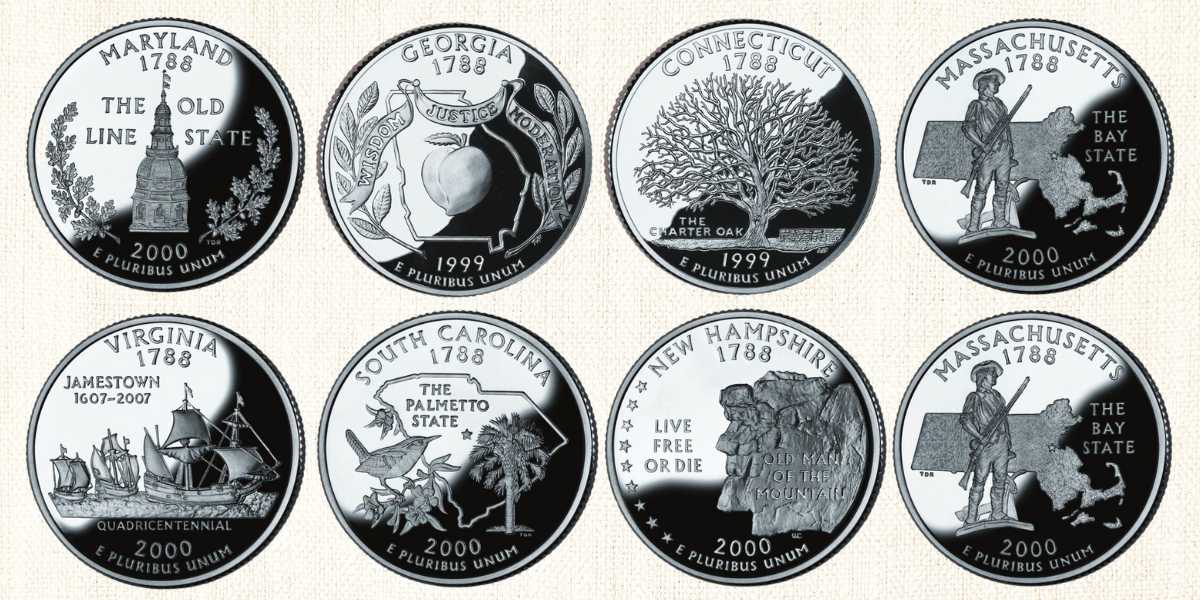
1788 Quarter Value Chart
| Mint Variety | Circulated Coins | Mint State Coins (Uncirculated) | Clad Proof | Silver Proof |
| 1788 Connecticut Quarter | $0.25 | $1 – $5 | $1.75 – $60 | $5 – $68 |
| 1788 Georgia Quarter | $0.25 | $1 – $5 | $1.75 – $60 | $5 – $80 |
| 1788 Maryland Quarter | $0.25 | $1 – $5 | $1.75 – $35 | $5 – $74 |
| 1788 Massachusetts Quarter | $0.25 | $1 – $5 | $1.75 – $40 | $5 – $68 |
| 1788 New Hampshire Quarter | $0.25 | $1 – $5 | $1.75 – $35 | $5 – $88 |
| 1788 New York Quarter | $0.25 | $1 – $5 | $1.75 – $35 | $5 – $68 |
| 1788 South Carolina Quarter | $0.25 | $1 – $5 | $1.75 – $30 | $5 – $68 |
| 1788 Virginia Quarter | $0.25 | $1 – $5 | $1.75 – $35 | $5 – $68 |
1788 Quarter: Historical Background
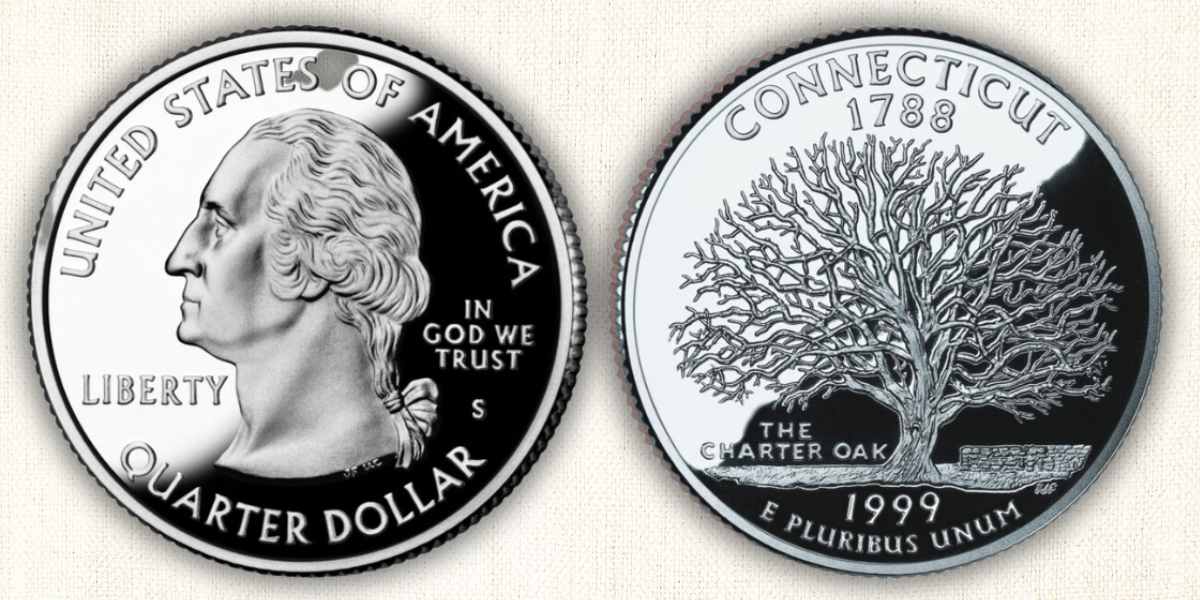
No, the 1788 quarter is not a fake coin. It is part of a larger commemorative series of coins launched with the 50 State Quarters Program, which honored each state in the year they joined the Union.
The 1788 quarter series celebrated the eight states that joined the Union in 1788. These states included:
- Connecticut
- Georgia
- Maryland
- Massachusetts
- New Hampshire
- New York
- South Carolina
- Virginia
Despite displaying the year 1788 on their reverse face, the 1788 series of quarters was released between 1999 and 2001.
1788 Quarter: Physical Features
George Washington Quarters have always been silver-colored, and the 1788 series of quarters is no different. This appearance is due to the planchet being made of 91.7% copper and 8.3% nickel.
Just to summarize, below is a table highlighting the physical characteristics of your typical 1788 quarter.
| Coin Feature | Notes |
| Mass | 5.7 grams |
| Diameter | 24.3 mm |
| Thickness | 1.8 mm |
| Metallic Composition | 91.7% Copper
8.3% Nickel |
Obverse Features
The 1788 quarter may have eight varieties, but all their obverse designs are identical. And we have William Cousins to thank for this absolutely beautiful design. William’s design was an improvement upon John Flanagan’s Washington Quarter.
Below is a visual comparison between John Flanagan’s Bicentennial Washington Quarter and William Cousin’s updated design.

On the obverse, William Cousins chose to include the following elements:
- George Washington’s Left-Facing Portrait
- Country of Issue, “UNITED STATES OF AMERICA
- The legend, “LIBERTY”
- The denomination, “QUARTER DOLLAR,”
- The mint mark
- The motto, “IN GOD WE TRUST.”
- The designers’ Initials, “JF” and “WC.”
Reverse Features
Unlike the obverse, the reverse features eight different designs commemorating the eight states that joined the Union in 1788. These designs were imagined by five different engravers, including William Cousins.
Below are the common characters that are included in all the eight designs:
- The State’s Name
- The Year 1788
- The Year of Issue
- The motto“E PLURIBUS UNAM”
The centerpiece for each design was different, each paying homage to their respective states. The table below highlights all the elements included on the centerpiece of each version of the 1788 quarter.
| 1788 Quarter Variety | Centerpiece Elements on the Reverse |
| 1788 Connecticut Quarter | ● The image of the Charter Oak of Connecticut
● The words “THE CHARTER OAK” ● “TJF,” the designer’s initials (T. James Ferrell) |
| 1788 Georgia Quarter | ● The map of Georgia
● An image of a peach, the state symbol. ● The virtues “WISDOM,” “JUSTICE,” and “MODERATION.” ● Two branches of an oak tree, the national tree. ● “TJF,” the designer’s initials (T. James Ferrell) |
| 1788 Maryland Quarter | ● An image of the Maryland State House dome
● Two White Oak leaf clusters ● Maryland’s nickname “THE OLD LINE STATE” ● “TJF,” the designer’s initials (T. James Ferrell) |
| 1788 Massachusetts Quarter | ● The map of Massachusetts
● The state nickname “THE BAY STATE” ● The image of a minuteman soldier ● “TJF,” the designer’s initials (T. James Ferrell) |
| 1788 New Hampshire Quarter | ● The image of the rock formation, Old Man of the Mountain
● The words “OLD MAN OF THE MOUNTAIN” ● The state motto, “LIVE FREE OR DIE” ● “WC” the designer’s initials |
| 1788 New York Quarter | ● An image of the statue of Liberty
● The map of New York ● The words “Gateway to freedom ● 11 stars ● The designer’s initials “AM” (Alfred Maletsky) |
| 1788 South Carolina Quarter | ● The map of South Carolina
● The bird, Carolina Wren resting on the Yellow Jessamine. ● A palmetto tree ● The state nickname “THE PALMETTO STATE” ● The designer’s initials “TDR” (Thomas D. Rogers) |
| 1788 Virginia Quarter | ● Images of the ships, Godspeed, Susan Constant, and Discovery
● The name of the town, “Jamestown” ● The time period “1607-2007 ● The word “QUADRICENTENNIAL” ● The designer’s initials “EZS” (Edgar Z. Steever) |
1788 Quarter: Varieties
Judging by the designs struck on the reverse of the 1788 quarters, we have eight different coin varieties. They include:
1788 Connecticut Quarter

The 1788 Connecticut quarter was released in 1999, with all U.S. mints taking part in its production. The 1788 Connecticut quarter does not have high value. Circulated examples are only worth their face value, and mint coins only sell for $1-$5.
The money is in proof coins that can sell anywhere between $1.75 and $80. Silver-proof coins are the most valuable.
1788 Georgia Quarter
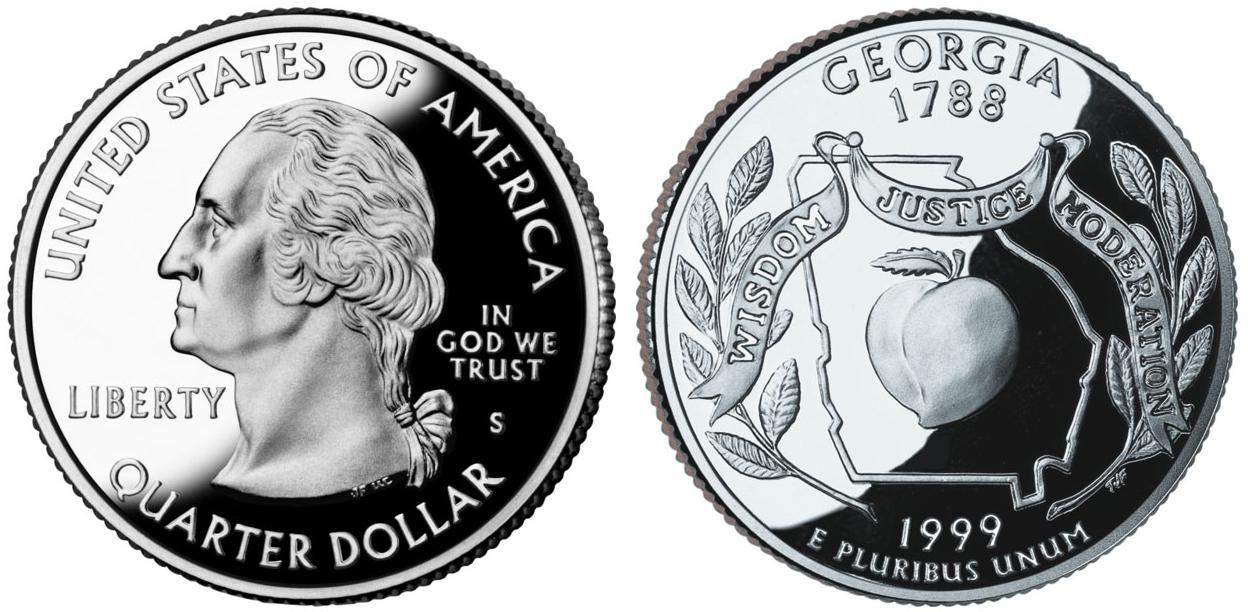
The 1788 Georgia quarter was also released in 1999. Below is a by-the-numbers breakdown of this coin’s mintage.
| U.S Mint | Mint Mark | Mintage |
| Denver | “D” | 488,744,000 |
| Philadelphia | None | 452,188,000 |
| San Fransisco | “S” | 3,713,359 Clad-Proof |
| 804,565 Silver Proof |
By these numbers alone, you can guess that the silver-proof variety is the most valuable due to its rarity. And you’d be right because these coins can fetch up to $80.
As for Denver and Philadelphia coins, those are worth around $5 in their mint state. Circulated 1788 Georgia quarters are only worth their face value.
1788 Maryland Quarter
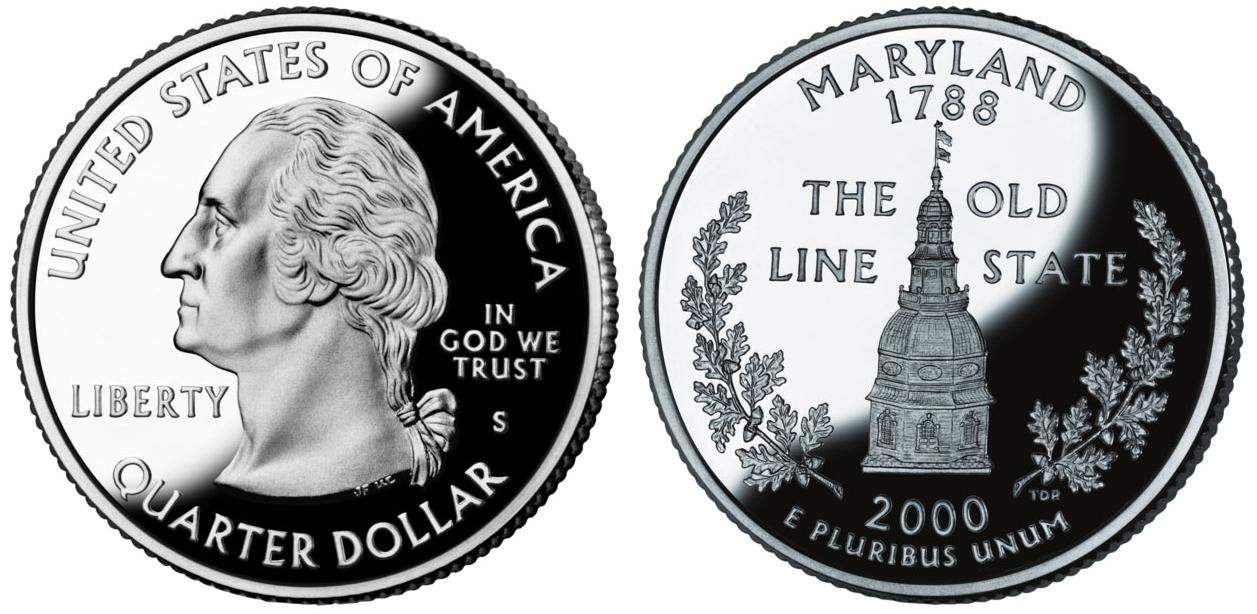
Released a year later is the 1788 Maryland quarter. Heavily circulated examples are only worth their face value. Mint-state versions of these coins can fetch up to $5.
Proof coins are rare and quite valuable. Silver-proof examples can sell for as much as $74.
1788 Massachusetts Quarter

Also released in the same year is the 1788 Massachusetts quarter. Circulated examples (D and P varieties) are only worth their face value ($0.25). Mint state versions of these coins can fetch upto $5 apiece. Proof coins are the jackpot, with silver examples commanding a value of up to $68.
1788 New Hampshire Quarter
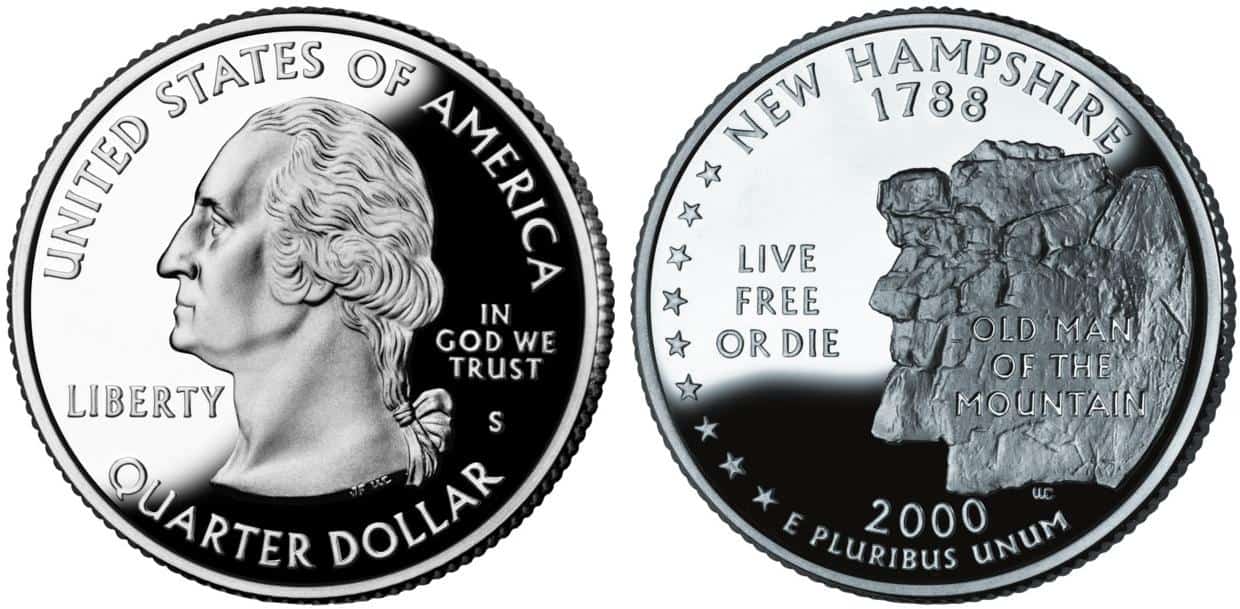
Another coin released in the year 2000 is the 1788 New Hampshire quarter. Despite having almost the same mintage as the Massachusetts State quarter, New Hampshire’s quarter is the most valuable of the 1788 quarters.
Silver-proof examples of this coin can fetch as much as $88. Unfortunately, circulated P and D versions of this coin are only worth the denomination struck on the obverse, $0.25.
1788 South Carolina Quarter
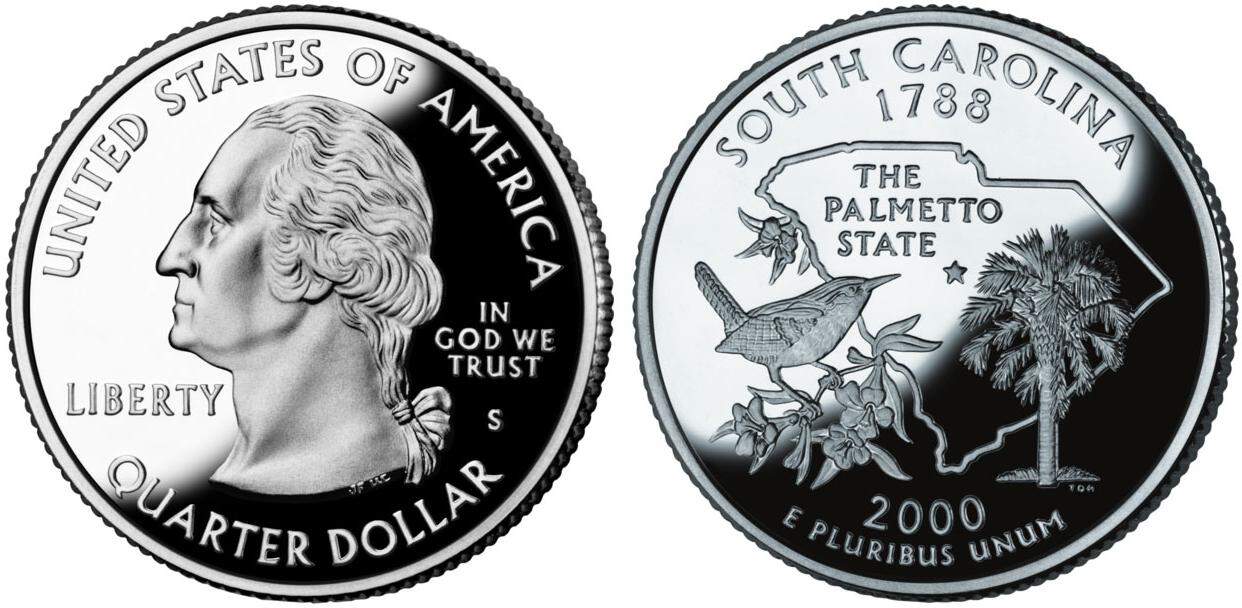
Continuing with the 1788 quarter released in the year 2000, we proceed to a coin dedicated to the Palmetto State. Over 1.3 billion of these coins were released to the public, with most of them still in circulation today.
These circulated versions are only worth their face value ($0.25), while mint state coins can sell for up to $5. As you would expect, proof coins are the most valuable, with silver-proof coins selling for up to $68.
1788 Virginia Quarter

Released in the third quarter of the year 2000 is the 1788 Virginia quarter. This is a coin that celebrates two events: Virginia’s admittance to the Union and Jamestown’s upcoming 400-year anniversary.
It’s not the most valuable 1788 quarter, but it’s still a cool addition to any collection. The most valuable 1788 Virginia quarter is the silver-proof variety that can sell for up to $74 in its best condition.
1788 New York Quarter
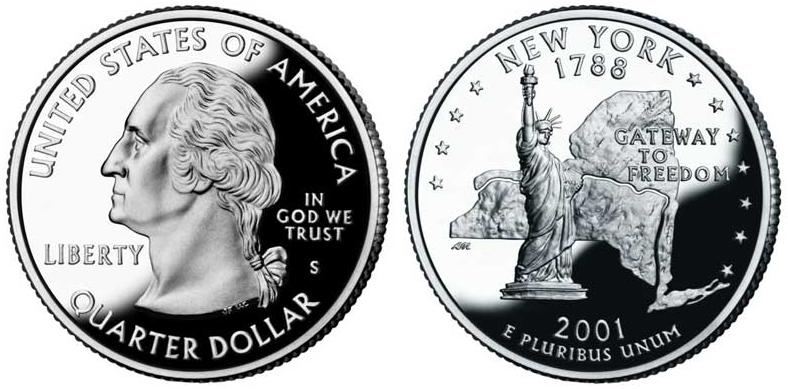
The New York State Quarter was the final release of the 1788 quarters, with over 1.2 billion coins struck in 2001. As you would expect, heavily circulated versions of these coins are still worth their face value.
The more rare silver-proof coins are worth the most money, with excellent examples selling for up to $68.
For the values of mint state and clad-proof coins, please refer to the value chart below the introductory paragraph.
1788 Quarter Valuable Error Coins
We cannot talk about the value of 1788 quarters without discussing the error coins of the series. So, without further ado, here are five valuable error coins in the 1788 quarter coin series:
1. 1999-P Connecticut Quarter with Full Obverse Brokage Error: Sold for $3,450

An obverse brokerage error occurs when a struck coin sticks to the lower die and then impresses itself onto the next coin. What you get is a mirror image of the stuck coin on the newly struck coin. And that is exactly what we have on this particular error coin.
2. 1999-P Georgia Quarter with Double Struck and Deep Die Cap Error: Sold for $4,200

This particular coin has a combination of two errors: a deep die cap error and a double-struck error. This combination makes the coin more rare and interesting to look at. It looks like one coin splitting into two, like one biological cell making a copy of itself.
3. 2000-D South Carolina Quarter with Multiple Double Struck Error: Sold for $2,990

This particular coin was struck a remarkable nine times. All that pounding distorted the coin’s shape and details. What’s left on the reverse is a faint image of the Palmetto tree and half a Carolina Wren. George Washington wasn’t any luckier, as the obverse is also distorted. At least it sold for a pretty coin.
4. 2000-P Massachusetts Quarter with Off-Center and Straight Clip Error: Sold for $374
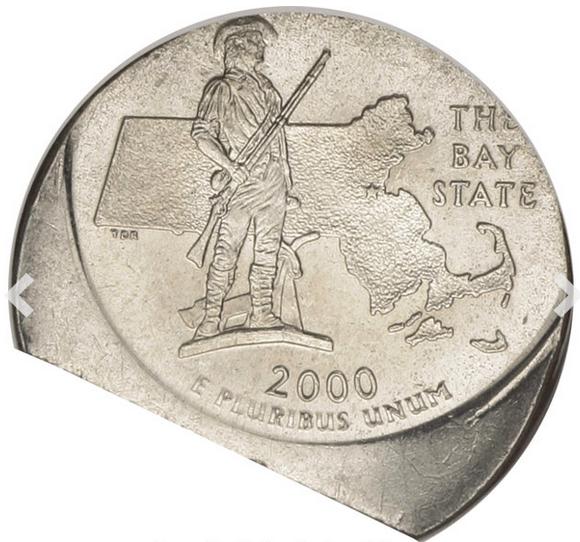
Here’s another 1788 quarter with a combination of errors. This particular coin is a Massachusetts State coin with a severe off-center error. It also has a straight clip error that cuts a straight edge on the otherwise round coin. It also suffers environmental damage, adding to the rarity and beauty of the coin.
5. 1999-P Georgia Quarter Struck on an Experimental Quarter: Sold for $2,160
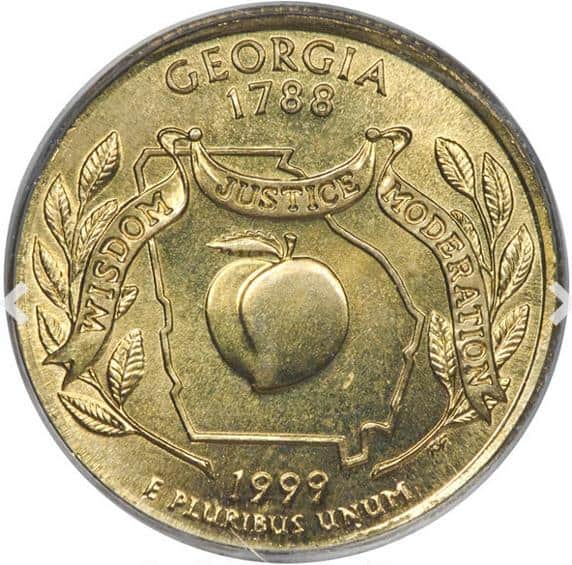
How often do you see a golden quarter? Almost never. But here is an extra-fine golden quarter that sold in 2020 for $2,160. This particular coin was struck on an experimental planchet. Though the metallic composition of the coin is unknown, you’ll need deep pockets to take it off the hands of its current owner.
Final Thoughts
Often, the government uses coins to celebrate important people and events in our nation’s history. The 1788 quarter-dollar coin series celebrates all the eight states that joined the Union in the year 1788. Though these coins bear the year 1788, they were released between 1999 and the year 2001.
Unfortunately, circulated versions of these coins are only worth the value they display on their obverse faces. If you want better value, you should hunt down mint-state versions of these coins, or better yet, go for clad and silver-proof 1788 quarters. Those can sell for up to $88.


Jenson is a professional numismatist, a dedicated coin collector, a graduate of the College of Business at Oregon State, a life member of the American Numismatic Association (ANA), and an overall coin nerd. He is the founder of Coin Value List.
